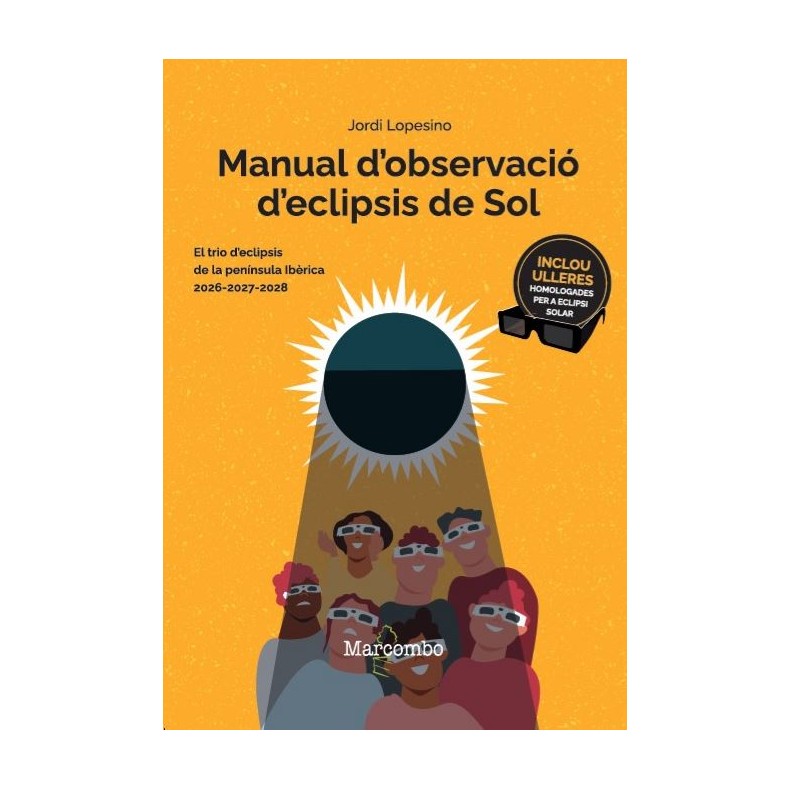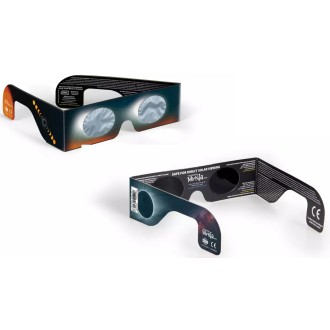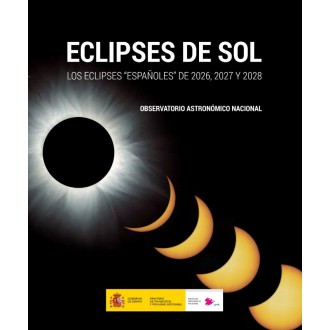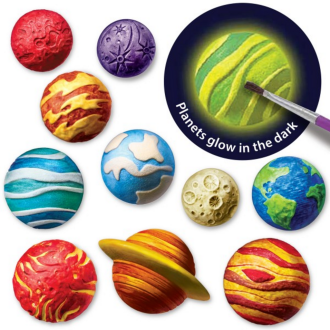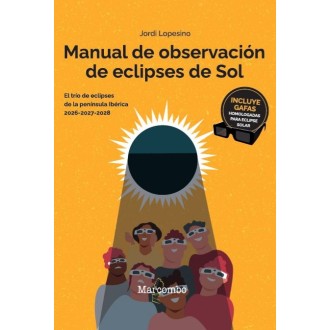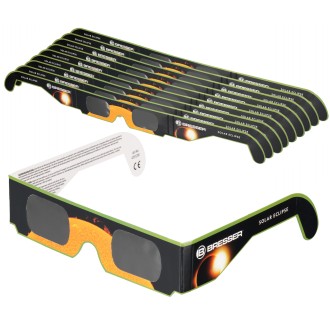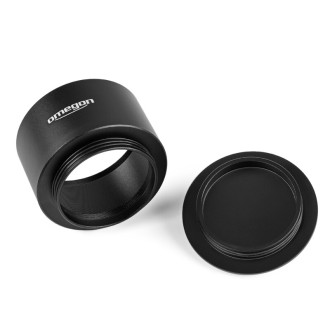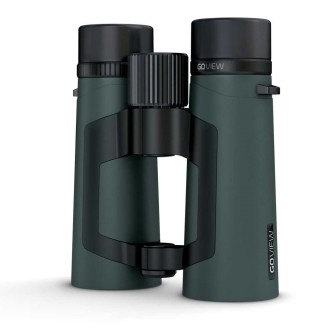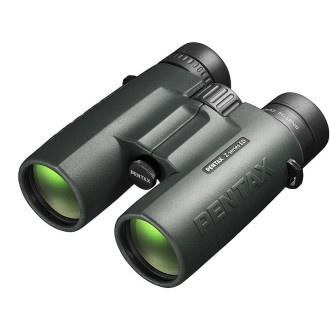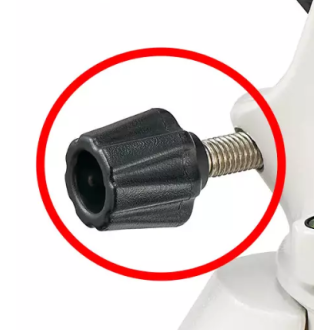Manual d'observació d'eclipsis de Sol Editorial Marcombo edició Català
The most expected eclipse trio of the Iberian Peninsula in 2026, 2027 and 2028! In a very short time, in our country, we will have the great fortune to see three solar eclipses: two total eclipses and one annul eclipse. All three will leave their trail of darkness crossing the Iberian Peninsula from one side to the other.
| Carrier | Description | Estimated Delivery | ||
|---|---|---|---|---|
 |
Home delivery - International | Home delivery - International |
Monday, 22 December - Wednesday, 31 December |
|

Home delivery - International
Home delivery - International
Estimated delivery:
Monday, 22 December - Wednesday, 31 December
Manual d'observació d'eclipsis de Sol - Jordi Lopesino
The essential book to enjoy the solar eclipses of 2026, 2027 and 2028
With Telescopiomania - and free solar observation glasses!
Congratulations! The sky gives us three consecutive years of authentic cosmic spectacle:
Total solar eclipse in 2026 visible from the Iberian Peninsula.
Total solar eclipse in 2027, another unique event without leaving the country.
And in 2028, an annular solar eclipse that will cross Spain from end to end.
You no longer need to travel thousands of miles to enjoy it: eclipses are coming to our home! This is the ideal moment to prepare yourself and live an unrepeatable astronomical experience.
Everything you need to know to safely observe a solar eclipse
Still don't know how to observe a solar eclipse? Don't worry. The new book "Manual d'observació d'eclipsis de Sol" by Jordi Lopesino explains it step by step.
It is a practical and clear guide, perfect for beginners and astronomy enthusiasts, with everything you need to know to experience this phenomenon with safety and excitement:
How and where to see the eclipses of 2026, 2027 and 2028.
How to protect your eyesight with approved solar observation glasses.
Which telescopes, filters and cameras to use.
And how to capture spectacular images of one of the most fascinating natural phenomena on the planet.
The book is written in a proper and inspiring way, designed for all those who want to discover the magic of eclipses and understand what really happens when the Moon covers the Sun.
Complimentary solar observing glasses
With your purchase of the Solar Eclipse Observation Manual, we give you official glasses to observe solar eclipses Astrosolar, like these 👉 Astrosolar solar eclipse glasses
These approved glasses allow you to look at the Sun in total safety and enjoy every second of these unique events.
Telescopiomania: your trusted astronomy store
At Telescopiomania you will find all the material and technical advice you need to live the eclipses to the fullest: solar filters, telescopes, cameras, accessories and much more.
Whether you are a beginner or an expert, we will help you to make this astronomical experience an unforgettable experience.
Don't miss this opportunity!
Buy now the Manual d'observació d'eclipsis de Sol by Jordi Lopesino with Telescopiomania and get ready to live, understand and photograph the most impressive solar eclipses of the decade.
Available now with free solar observation glasses.
Don't miss it!
Date of publication:
06/11/2025
ISBN:
9788426740830
Type of binding:
Tapa Tova
Product dimensions:
15x21
Number of pages:
100
INDEX
INTRODUCTION
The nearest universe
1. ANCIENT COSMOLOGY
1.1 India
1.2 Xina
1.3 Antic Egypt
1.4 Classical Greece
1.5 Maies
1.6 Renaissance
1.7 Back to the present
2. MAIN ACTORS OF AN ECLIPSE
2.1 The Earth
2.2 The Moon
2.3 The Sun
3. HOW A TOTAL SOLAR ECLIPSE WORKS
3.1 Phases of an eclipse
3.2 Other remarkable phenomena in a total solar eclipse
3.3 Where the Moon enters in an eclipse
3.4 Duration of a solar eclipse
4. WAYS TO MEASURE THE SKY
5. HOW TO OBSERVE THE SUN SAFELY
5.1 Observation with binoculars
5.2 Solar projector
5.3 Telescope
5.4 Motorized high-motorized high-motor mount
5.5 German equatorial mount
5.6 Special optics to observe the Sun
6. PHOTOGRAPHING THE ECLIPSE
6.1 With mobile phone
6.2 Telescope and DSLR camera
6.3 Photography with telescope and CMOS-type planetary cameras
7. ECLIPSE PLANNING
7.1 How to choose a good place to observe it
7.2 Make sure we have a good observing site
7.3 Calculating the position of the Sun per day
8. SAROS CYCLE
9. TRIO D'ECLIPSOS
9.1 Total solar eclipse, August 12, 2026
9.2 Total solar eclipse, August 2, 2027
9.3 Annular solar eclipse, January 26, 2028
10. ECLIPSE HUNTERS
CONCLUSIONS
ANNEX
Lunar Eclipse
AGRAÏMENTS

